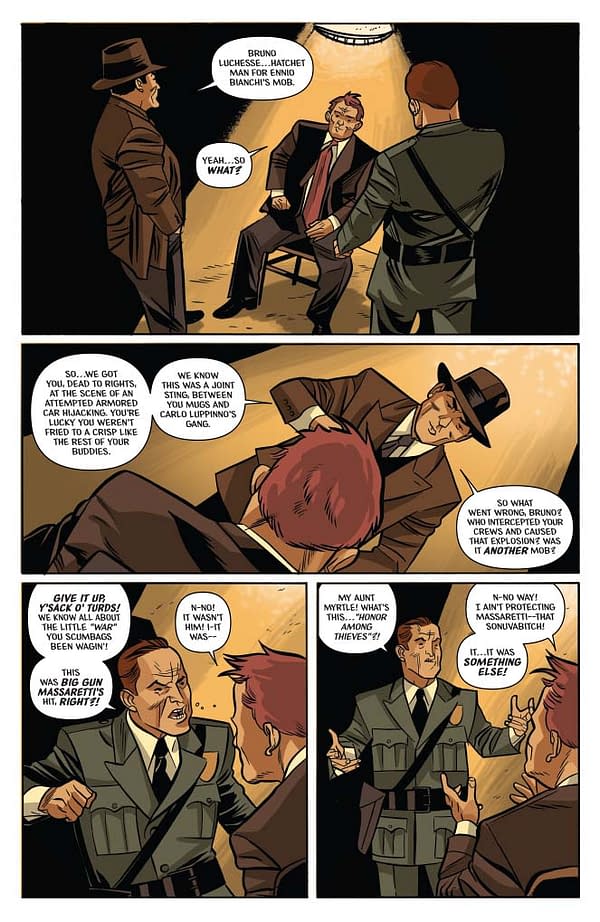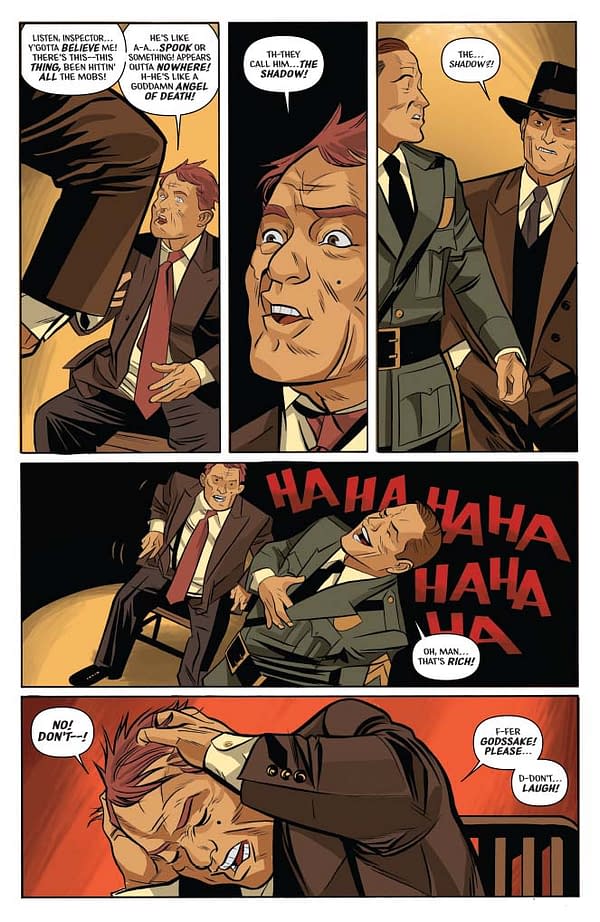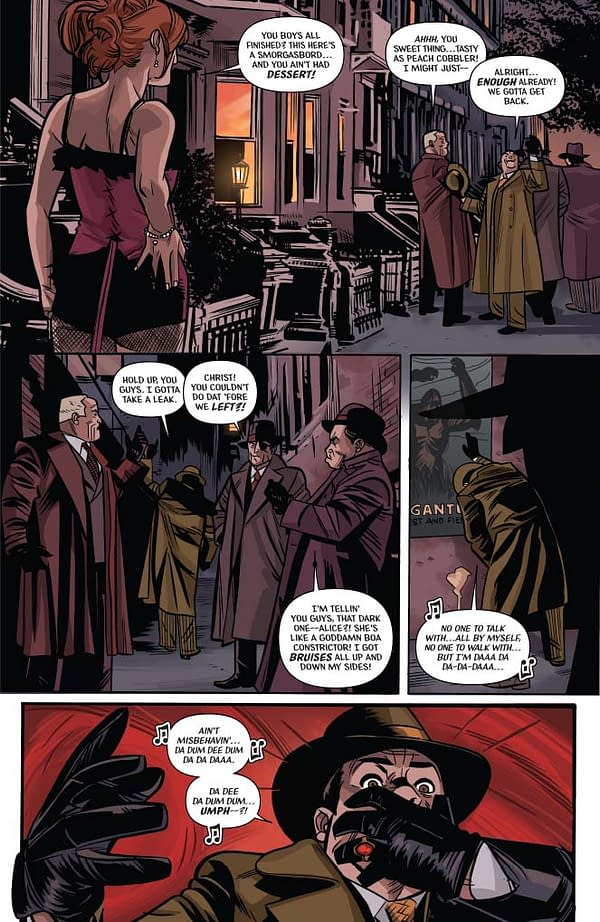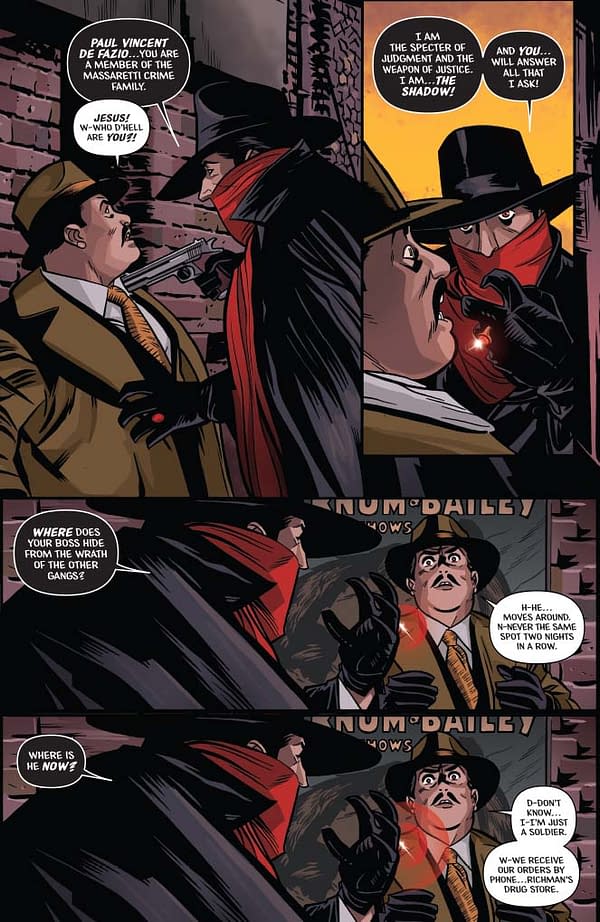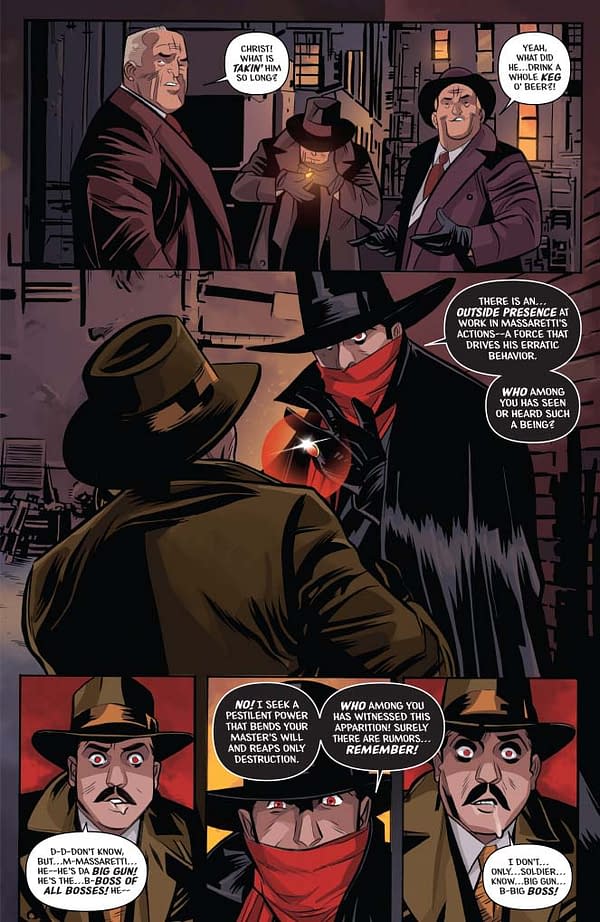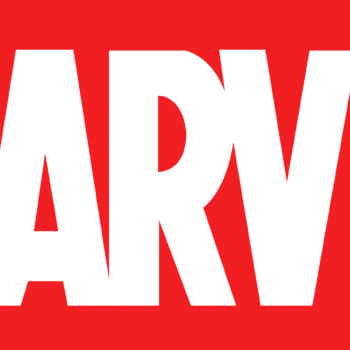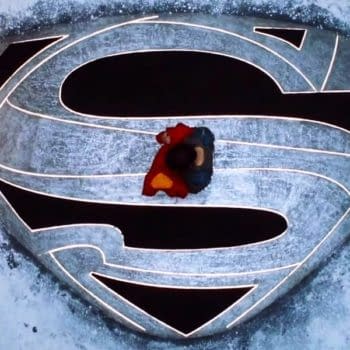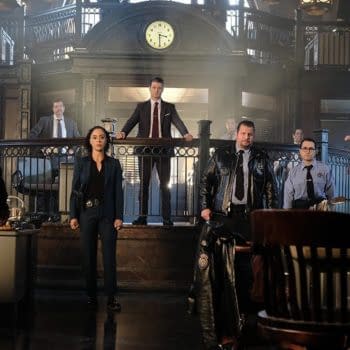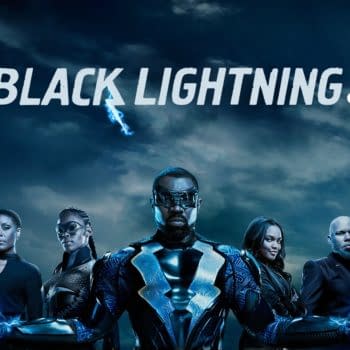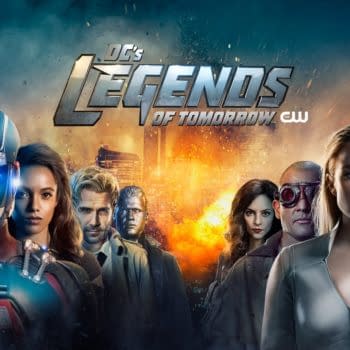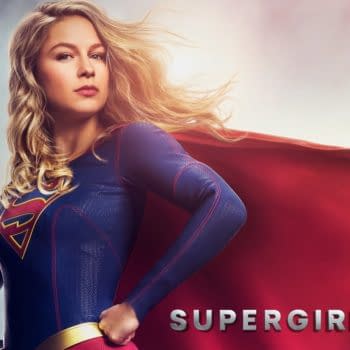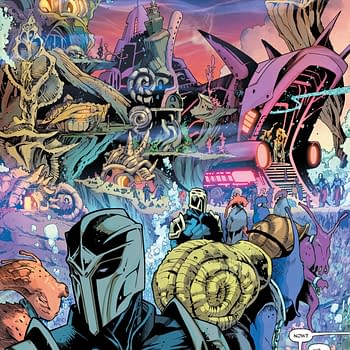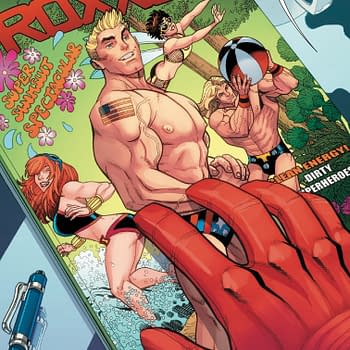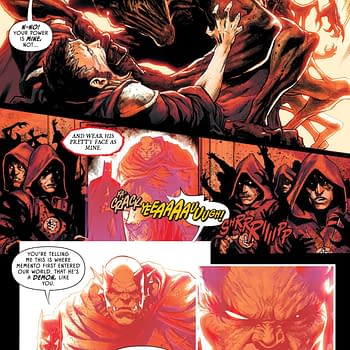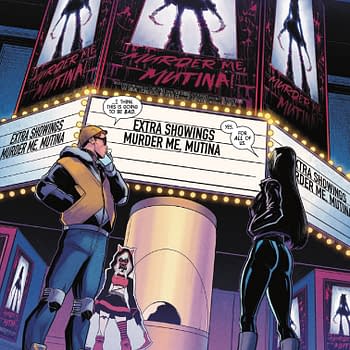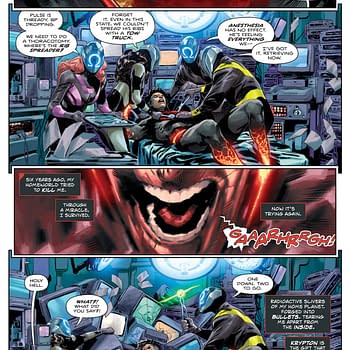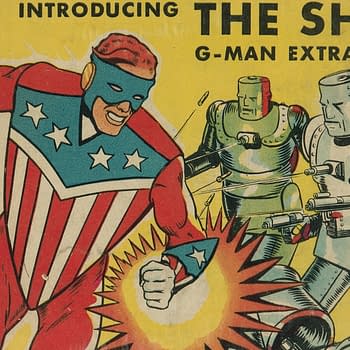Posted in: Comics | Tagged: Aaron Gillespie, Dynamite Entertainment, grendel, matt wagner, the shadow, Wilfredo Torres
Matt Wagner Talks Steaks, Pulps And The Evil The Lurks In The Hearts Of Men

AARON GILLESPIE: What's the best side to order at Mortons?
MATT WAGNER: HA! Interesting way to start an interview…a subject near and dear to me! Although, truthfully, I don't even come close to having Morton's side orders menu memorized. But, as a general rule, I tend to like potatoes and greens with my steak. My first inclination is to go with some cut of fries so as to get that crunch and provide a textural variety. But I also dig baked potatoes, au gratin, whatever…. And some sautéed spinach or Swiss chard to go along with that would be nice. The bitter earthiness of the leafy greens really is a nice contrast to the richness of the steak and potatoes.
AG: Cajun Ribeye or no?
MW: Definitely.
AG: Okay, now that that's out of the way, let's get to comics. You seem to enjoy playing in the pulp genre. From Sandman Mystery Theatre to The Shadow. What appeals to you about this genre?
MW: A big part of it is the time period. My parents were from the 30s/40s generation and so I have a certain amount of inherited nostalgia for the era from them. But, additionally, the pulps were what preceded the contemporary comic book narrative. They were wild and completely unfettered in regards to their sense of drama and imagination. Pulp authors were paid by the word and worked under harsh deadlines and so that often drove them to concoct truly astounding stories that might've been much less exciting had they stopped to think about them too much. Were they "great" writers? Not in a truly literate or even technical sense but, again, they managed to spin such entertaining tales that the fine tunings of their craft aren't really the point. Plus, I was an only child and so I'd always felt drawn to the "lone avenger" type of characters. I was far more interested in the dark and moody exploits of The Shadow or Batman than the chatty bombastics of hero groups like the X-Men or Avengers.
AG: I know you have a great affection for the work of Alex Toth. What influence does that work have on your writing?
MW: On my writing? None at all. Alex was a visual master and his sense of story-telling was phenomenal, but he wasn't a writer in any noteworthy fashion. I always describe Alex Toth as "a master without a masterpiece". If you look at the legacy of his work, which is visually stunning, he never had a long-lasting run on any one title that had any real lasting effect on the comic-book narrative. I suppose you could point to his run on Zorro as an example of this but, there again, it's the visual style we tend to remember from those issues and not the stories, per se. And certainly not the combination of story and art which is, of course, the most perfect note to strike in comics. Alex's output seemed to indicate a restless imagination that flittered from this project to that, always looking for some new subject to portray and bring to life with his powerful skills. But there's just no standout project–like with, say Kirby, Dtiko, C.C. Beck, etc…that defines him in via resonant narrative. I don't mean that to any way demean Alex's incredible skills as an artist…as you said, I love his stuff. But, as a writer, I never think of Alex Toth. Rather, I think of great writers that inspire me—and, considering that I'm a absolutely voracious reader, there're really too many of those to list.
AG: What can we expect from the Shadow Year One? How does your take differ from some of the more recent issues?
MW: First and foremost, I consider it vitally important that we never get inside The Shadow's head. I know some of the writers on the continuing series have worked with The Shadow's internal monologue in the captions and I think that's a huge mistake. Part of what makes this character so great is his mysterious aura and the fact that he's almost beyond the scope of we mere mortals. And, certainly, that's those various authors' prerogative, but I prefer to keep The Shadow at a bit of a distance so as to regard him with a bit more awe rather than familiarity—much the same as way Conan Doyle did by having Sherlock Holmes' adventures narrated by Dr. Watson. To be inside of Holmes' head would sap him of all his mythic grandeur and I take the same attitude with The Shadow.
In my Year One take on The Shadow, I'm attempting to distill the many different and popular versions of the character into a version unique to this comic book series. For the greater part, the pulp canon as established by author Walter Gibson is the most significant source for that portrayal but the radio version is also a huge influence on how the public at large perceives The Shadow. Additionally, a lot of younger readers only know The Shadow from the 1994 movie starring Alec Baldwin. Truthfully, all of these versions provided me with some great material with which to craft our tale.
The Shadow: Year One establishes the character in his initial adventures after returning to the states from his many years spent abroad in the devastating aftermath of World War I. It shows him evolving into his costumed persona and establishing the structures and motifs of his ongoing crusade against crime. New readers will find this the perfect launching point to jump into the adventures of this classic and resilient character. And, since I'm a Shadow fan myself from way back when, long-time readers will find lots of familiar elements and few (I think) terrific surprises in store.
AG: From what I've seen, Wilfredo Torres is turning in some incredible work. When scripting how much decision-making do you do in terms of visuals? Do you leave it pretty open for the artist?
MW: Wilfredo has been delivering a kick-ass job on this book! He's an incredibly talented artist and I'm thoroughly happy to be working with him on this series. My scripts tend to describe action and atmosphere but they don't specifically spell out how an artist should address the visuals. That said, there are instances where I ask for certain changes from all artists with whom I work—that's just a result of the fact that, due to the many years and pages I've got under my creative belt as both a writer and an artist, I really understand story-telling and how it unfolds for the reader. Sometimes an artist will get a little too wrapped up in a certain visual and lose sight of how that particular drawing or design affects the flow of the story. I know this from my own artistic efforts as well. Sometimes, I've got the underdrawing for a great-looking panel laid down…but then I realize that it's not servicing the story-telling properly and I have to bite the bullet and let go of that nice drawing that so tickled me. As an example, on the issue of Year One, currently in production, Wilfredo and I were butting heads a bit about a certain splash panel that, I felt strongly really needed to be portrayed in a certain way to maximize that story beat's drama and scope. He saw it a different way and eventually we got it worked out and the page is drop-dead gorgeous. But that was one panel out of an entire issue's worth of material. Generally, I find I'm pretty good at communicating what I want to see in the script and then letting the artist take it from there.
AG: How do you construct your scenes? Does the visually cool stuff come first? Do you do most of your writing in your head or does it all evolve from the script?
MW: Certainly, the visual element is a major factor in all comic-book writing—even on those scenes that are collectively referred to as "talking heads" scenes. You always want some sort of visual pizzazz to keep not only your readers but also your artist interested as well. But the eye candy can't dominate over the story's construction…things need to make sense, they need to have an emotional resonance and they need to be exciting. I'm not much of a note-taker as a writer. One night long ago, I spent a night at Alan Moore's house and he showed me these incredibly intricate notes and graphs he'd used to plot out an entire series (his self-published and, as yet, unfinished Big Numbers). That's not the way I work at all. I often joke around that I write like an artist and I draw like a writer and, truthfully, that's not far off the mark. I tend to work with a pie-chart with just a bare minimum of notations on each page…basically, I'm treating my notes as the "sketch" of the story for that issue. I like being able to see it as a whole, at one glance, perceiving it more visually without actually reading the notes very much. And I also tend to let the characters and the story lead me to where they want to go. If you've ever read Stephen King's On Writing, he describes his own process in much the same manner. You've really got to accept that the narration you're constructing will, at some point, take on a life of its own and, hopefully, lead you places you might not have predicted at the onset. As a writer, that keeps it exciting for me as well.
More about The Shadow: Year One #6 can be seen here.
Aaron Gillespie is an Iowa based cartoonist whose first published work was way back in 1997 in an issue of Kilroy Is Here for Caliber comics. Since then he has worked on Hell Yeah, Golly, and Screamland from Image comics, Brian Buccellatto's Foster Anthology, Negative Burn and 13 Steps from Desperado, and many other companies. Somewhere in there he took a few years off to move to LA to become a hotshot storyboard artist.
He currently has a blast writing Bionic Man for Dynamite Entertainment. www.dynamite.com/htmlfiles/viewProduct.html?PRO=C72513018400902511


